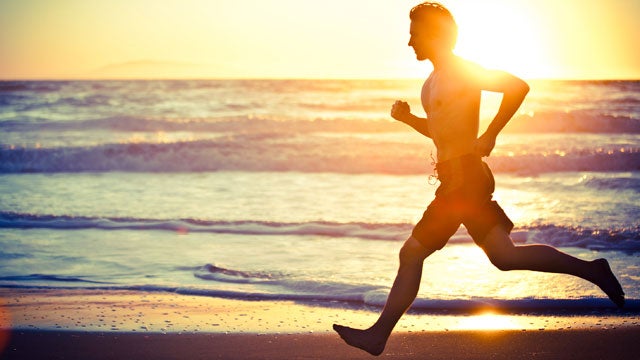The big, scary news over the last year for exercise aficionados is that “too much” exercise might be “bad” for you. The idea is that the stress associated with exercise and hormones like adrenaline released during exercise can do Over time, too much stress and too much adrenaline can cause the heart to get stiff and its pumping function declines.
The other concern is that related events can cause a buildup of calcium in the blood vessels that feed the heart and also make the heart susceptible to potentially dangerous irregular heartbeats.
Some have argued there might be a U-shaped curve for exercise and longevity with a sweet spot around 30-60 minutes of moderate to vigorous activity most days. More than that and the protective effects of exercise are lost, they argue.
But is that really the case and should we be dialing back our outdoor activities?
Is Exercise to Blame—or Something Else?
A lot of the concerns outlined above are fed by sad stories like that of the ultrarunner Micah True who died mysteriously while running in the wilderness. There is evidence that True had cardiomyopathy or an enlarged heart on autopsy. Was this the result of too much exercise or the result of an acute perhaps viral syndrome similar to the one experienced by the who later recovered and medaled at the Olympics?
Olympic Athletes Live Longer
The first thing we know is that drawing broad, sweeping conclusions from one-off case reports in medicine is generally a bad idea. We also know that participants in elite sports tend to but there are caveats, including what explains the findings:
Olympic medalists live longer than the general population, irrespective of country, medal, or sport. This study was not designed to explain this effect, but possible explanations include genetic factors, physical activity, healthy lifestyle, and the wealth and status that come with international sporting glory.
It’s also unclear what happens to these athletes after their careers ended and they entered middle age. Did they keep training or let their bodies slide?
Tour de France Riders Also Live Longer
With these ideas as a background, a recent preliminary report of a new study suggests that Tour de France participants from France live about These findings echo an earlier study on Tour participants from a number of
We studied the longevity of 834 cyclists from France (n=465), Italy (n=196) and Belgium (n=173) who rode the Tour de France between the years 1930 and 1964. Dates of birth and death of the cyclists were obtained on December 31, 2007. We calculated the percentage of survivors for each age and compared them with the values for the pooled general population of France, Italy and Belgium for the appropriate age cohorts. We found a very significant increase in average longevity (17%) of the cyclists when compared with the general population. The age at which 50% of the general population died was 73.5 vs. 81.5 years in Tour de France participants. Our major finding is that repeated very intense exercise prolongs life span in well trained practitioners. Our findings underpin the importance of exercising without the fear that becoming exhausted might be bad for one's health.
While it's certain that the Tour trained intensely for hours a day years on end, who knows what they did as they got older. The same caveats that apply to the Olympic athletes apply to the Tour riders. Did the racers keep riding after they retired from serious completion, and is it only too much exercise when you are middle-aged or older that matters?
And Elite Skiers Also Live Longer
If the pros aren’t a good source of data, what do we know about more average citizens who exercises into middle-age and older? Data on more than 50,000 Swedes who have completed the 90km cross-country showed 52 percent lower mortality compared to the general population and a 57 percent reduction in cardiovascular mortality. Some of the participants were elite competitors but most were in the dedicated recreational category like many ���ϳԹ��� readers.
The mortality benefit was greatest in individuals who completed more races, suggesting that cardiovascular mortality benefits are seen in truly “extreme” exercisers. This data is especially convincing because of the Swedish medical care and records system makes high-quality data on health outcomes
“The lowest SMRs (standardized mortality ratios) were found amongst older participants and in those who participated in several races. “
The one qualifier about the Swedish data is that this sort of extreme endurance exercise is associated with a small increased risk of atrial fibrillation and also irregular very slow Atrial fibrillation is a common and generally benign form of irregular heartbeat that, while unpleasant, is manageable. Additionally, life-threatening irregular heart rhythms were not associated with participation in the Vasaloppet race.
The Bottom Line
The conjecture and case reports about too much exercise don’t seem to hold much water when evaluated against these very large data sets. Beyond the data, the discussion raises a philosophical question: Do we exercise and do extreme forms of phsyical activity just for some sort of health “return on investment,” or is there more to it? What about the outcome of getting your mind, body, and spirit out of our ever more cubicalized world.
The proponents of the too much exercise hypothesis may have missed the bus on the data, but they’ve certainly forgotten what it means to challenge yourself for no good reason.
Michael J. Joyner, M.D., is a physiologist and anesthesiologist at the Mayo Clinic and a leading voice in the world of exercise physiology. Over the past 25-plus years, he's published hundreds of studies, many of which have focused on how humans respond to exercise. Dr. Joyner also writes at . The views expressed in his posts are his own and do not reflect those of his employer.


